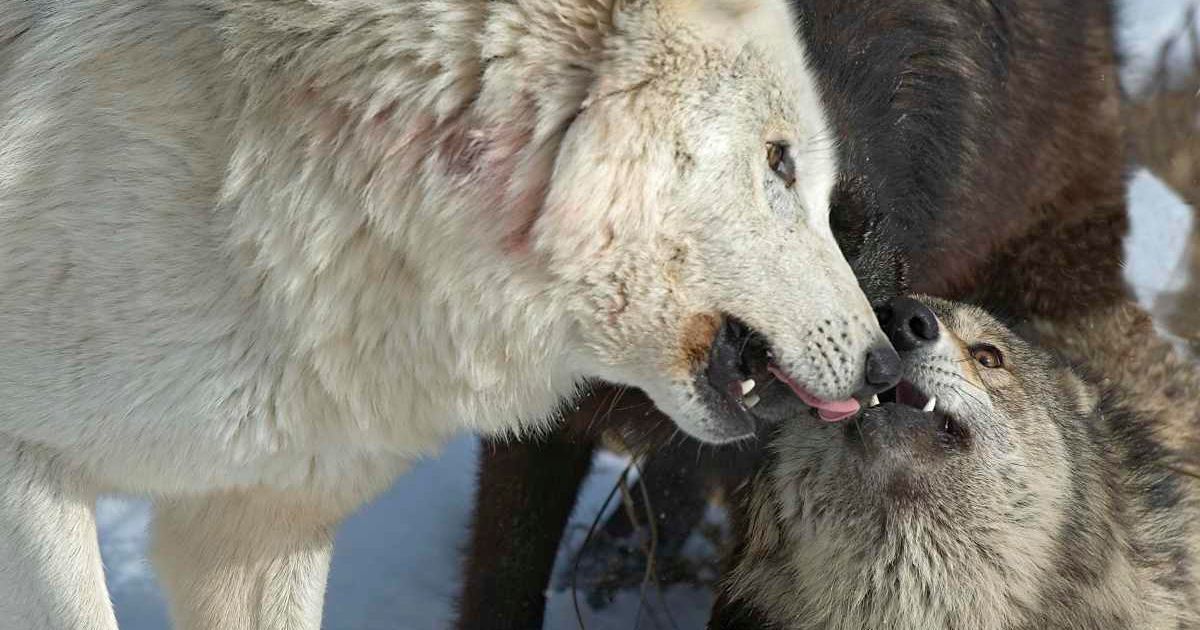Scientists Stunned After Noticing Gray Wolves in Alaska Hunt In a Way Never Seen Before

Wild animals often display a variety of hunting strategies and patterns, each shaped by the environment they live in and their potential prey. For instance, wolves have often been spotted hunting in packs to kill large animals like deer, while other predators, such as leopards, are known for their cautious nature. While such animals often hunt similar species, sometimes they switch their diets seasonally, relying on whatever food is available at the time. In recent news, on Prince of Wales Island in Alaska, experts have spotted gray wolves breaking from their usual hunting patterns by turning their attention to sea otters.

While scientists still have much to learn about how the wolves are managing to catch these marine animals, they believe that this unexpected change in diet could have a significant impact on both the local ecosystem and the wolves’ overall health, as reported by Phys. Patrick Bailey, a Ph.D. researcher at the University of Rhode Island, spoke of this and said, "We don't have a clear understanding of the connections between water and land food webs, but we suspect that they are much more prevalent than previously understood.” He added, “Since wolves can alter land ecosystems so dramatically, it is possible that we will see similar patterns in aquatic habitats."

He has been using an innovative combination of methods, such as analyzing wolf teeth and monitoring their movements in the wild with trail cameras. Bailey is examining gray wolf teeth collected from museum specimens and recently deceased animals using stable-isotope analysis. The layers in the teeth give an idea about what the wolves have eaten over time, offering a glimpse into their dietary patterns. He said, "If large enough, we can individually sample each of these growth rings to track an individual's feeding patterns over time. When we gather enough samples across individuals, we can then analyze how prevalent these dietary trends are throughout a population."

Another expert, Sarah Kienle, stated, "Capturing and eating prey in the marine environment is very different from doing it on land. We are super curious to see if these coastal wolves have behavioral adaptations that are different from terrestrial wolves." Despite more than twenty years of documented cases showing wolves eating aquatic animals, the complete scenario remains largely a mystery. As reported by Live Science, previously, Kelsey Griffin, a wildlife biologist, said that since Wolves are highly intelligent creatures, their adaptation strategies aren’t a huge surprise.

It is due to their intelligence and elusive nature that makes the process of studying these wolves difficult, according to Bailey. Meanwhile, the sea otters were once found in huge numbers along the Pacific Coast, but they were eventually driven to the brink of extinction during the colonial fur trade. Today, as the conservation efforts help their populations rebound, gray wolves are beginning to hunt them, giving rise to a surprising predator-prey dynamic. Scientists believe this unusual interaction may disrupt the local ecosystem. Researchers are also studying how this wolf behavior is affecting the recovery of sea otters.
More on Green Matters
Katie Cleary on Her Doc 'Protectors of the Wild': "The Health of the Ecosystem Relies on Wolves"
Colorado Releases First Five Wolves in First-of-Its-Kind Reintroduction Plan
Are Wolves Really Howling at the Moon? A Look at What's Really Going On